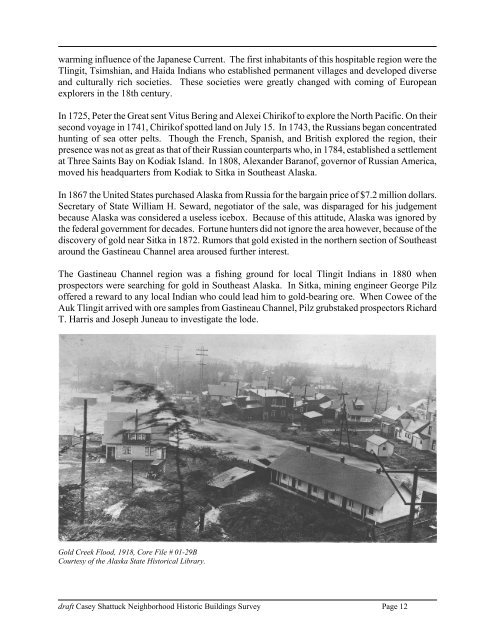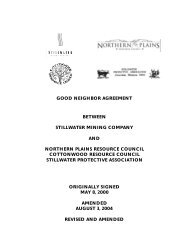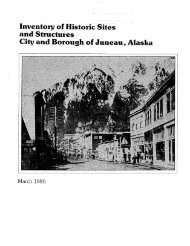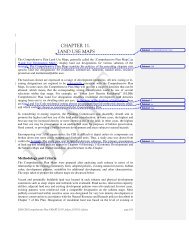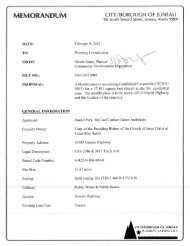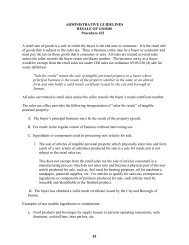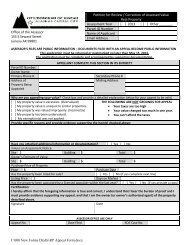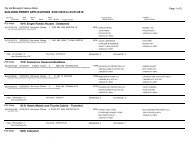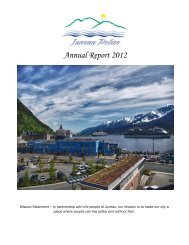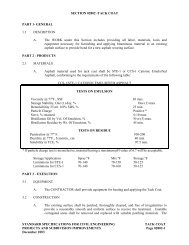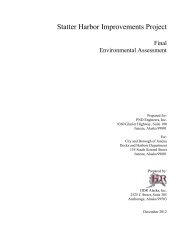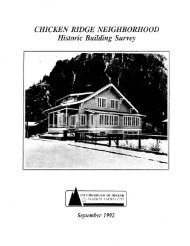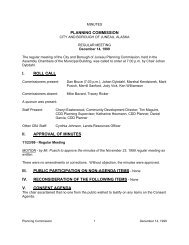Historical Context - The City and Borough of Juneau
Historical Context - The City and Borough of Juneau
Historical Context - The City and Borough of Juneau
You also want an ePaper? Increase the reach of your titles
YUMPU automatically turns print PDFs into web optimized ePapers that Google loves.
warming influence <strong>of</strong> the Japanese Current. <strong>The</strong> first inhabitants <strong>of</strong> this hospitable region were the<br />
Tlingit, Tsimshian, <strong>and</strong> Haida Indians who established permanent villages <strong>and</strong> developed diverse<br />
<strong>and</strong> culturally rich societies. <strong>The</strong>se societies were greatly changed with coming <strong>of</strong> European<br />
explorers in the 18th century.<br />
In 1725, Peter the Great sent Vitus Bering <strong>and</strong> Alexei Chirik<strong>of</strong> to explore the North Pacific. On their<br />
second voyage in 1741, Chirik<strong>of</strong> spotted l<strong>and</strong> on July 15. In 1743, the Russians began concentrated<br />
hunting <strong>of</strong> sea otter pelts. Though the French, Spanish, <strong>and</strong> British explored the region, their<br />
presence was not as great as that <strong>of</strong> their Russian counterparts who, in 1784, established a settlement<br />
at Three Saints Bay on Kodiak Isl<strong>and</strong>. In 1808, Alex<strong>and</strong>er Baran<strong>of</strong>, governor <strong>of</strong> Russian America,<br />
moved his headquarters from Kodiak to Sitka in Southeast Alaska.<br />
In 1867 the United States purchased Alaska from Russia for the bargain price <strong>of</strong> $7.2 million dollars.<br />
Secretary <strong>of</strong> State William H. Seward, negotiator <strong>of</strong> the sale, was disparaged for his judgement<br />
because Alaska was considered a useless icebox. Because <strong>of</strong> this attitude, Alaska was ignored by<br />
the federal government for decades. Fortune hunters did not ignore the area however, because <strong>of</strong> the<br />
discovery <strong>of</strong> gold near Sitka in 1872. Rumors that gold existed in the northern section <strong>of</strong> Southeast<br />
around the Gastineau Channel area aroused further interest.<br />
<strong>The</strong> Gastineau Channel region was a fishing ground for local Tlingit Indians in 1880 when<br />
prospectors were searching for gold in Southeast Alaska. In Sitka, mining engineer George Pilz<br />
<strong>of</strong>fered a reward to any local Indian who could lead him to gold-bearing ore. When Cowee <strong>of</strong> the<br />
Auk Tlingit arrived with ore samples from Gastineau Channel, Pilz grubstaked prospectors Richard<br />
T. Harris <strong>and</strong> Joseph <strong>Juneau</strong> to investigate the lode.<br />
Gold Creek Flood, 1918, Core File # 01-29B<br />
Courtesy <strong>of</strong> the Alaska State <strong>Historical</strong> Library.<br />
draft Casey Shattuck Neighborhood Historic Buildings Survey Page 12


